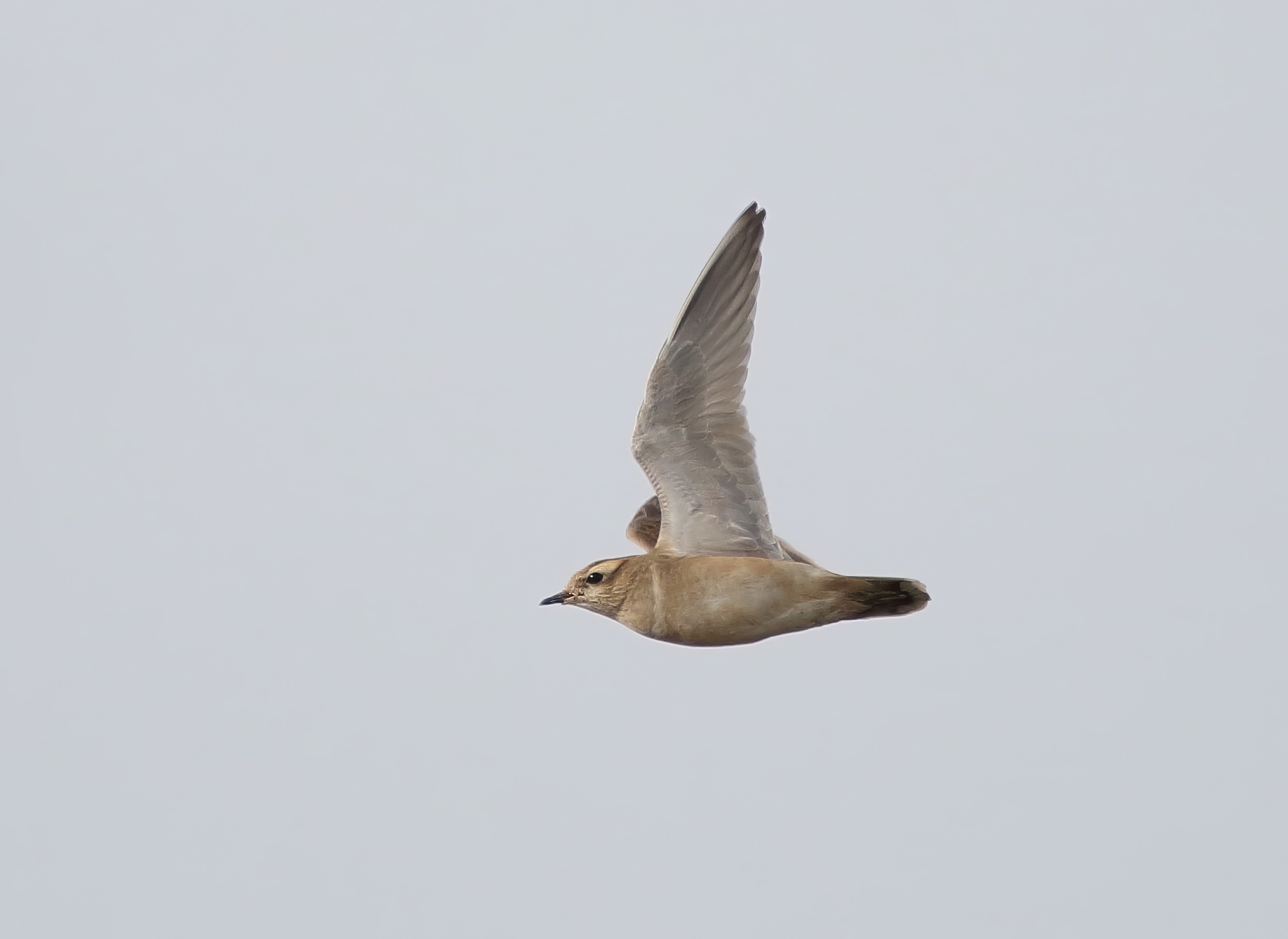Dotterel Charadrius morinellus
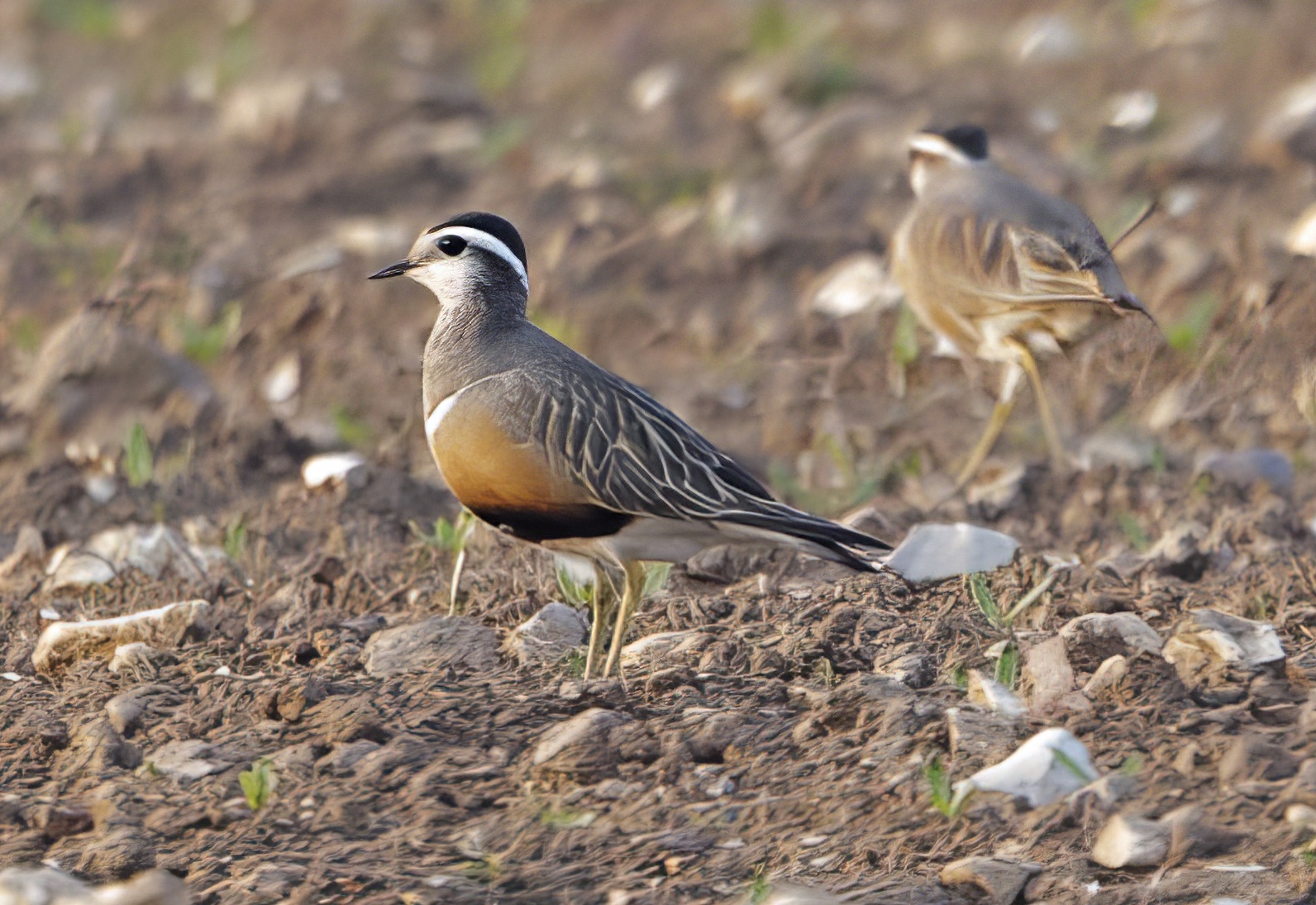
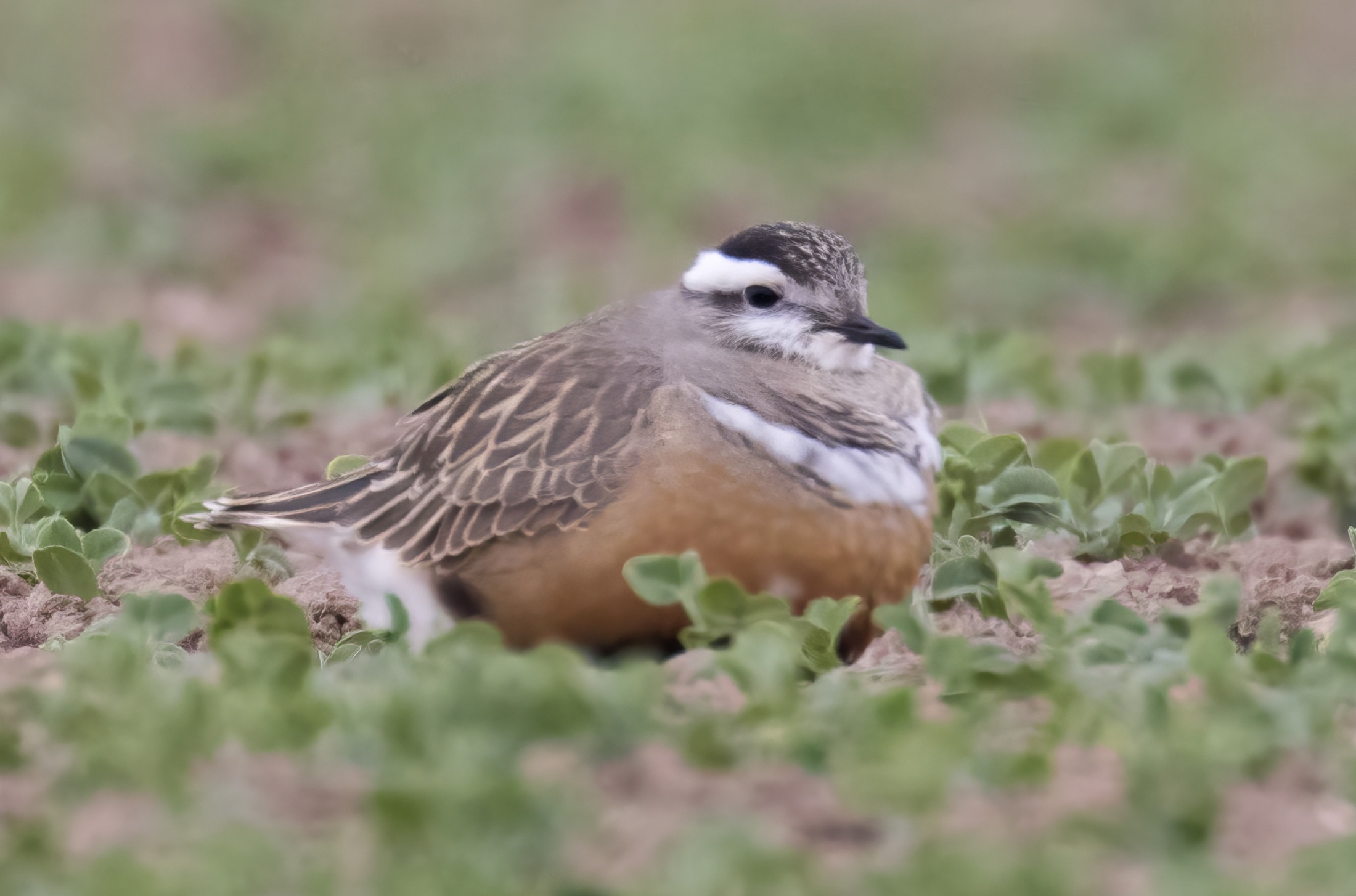
Dotterel: left, Tetney Lock April 23rd 2011 and centre, North Cotes May 8th 2017 (Graham Catley) and right, Frampton Marsh March 4th 2017 (Neil Smith).
In the nineteenth century, Dotterel was evidently a regular and numerous migrant. Numbers were thought to have declined by the end of the century, though counts were seldom recorded. However, a flock of 200 was noted at Stallingborough in May 1891 (L&A). Dotterel shoots were a regular feature of May in some areas. The favoured habitat was tightly grazed sheep pasture, with the north-east coastal area, the Wolds, heath district south of Lincoln and the Fens favoured (Cordeaux 1872, L&A).
In common with many species, fewer were present, or perhaps noticed, in the early twentieth century but reports picked up in the 1950s. The largest trip at this time was 47 near the Nene Mouth on 20th August 1959 – this may be the largest autumn flock recorded in Lincolnshire. From 1979 up to 2016, Dotterels have been seen in every year except one (see first chart). Numbers are variable between years, and the peaks have been 59 in 1981, 114 in 1996 and 80 in 2014. Note, though, that these larger totals are estimates as it is often difficult to judge how many are present, taking into account factors such as turnover of birds during a stay of a week or more, and interchange between nearby fields. Some groups are seen on a single day but quite often there will be Dotterels in a field or fields for up to two weeks, or sometimes longer, typically with different numbers counted on succeeding days.
As the first chart shows, spring numbers have continued to exceed autumn numbers by a large margin. During 1979-2016, the one autumn count larger than three birds was 13 at Sutton Bridge on 20th August 2006. The second chart shows the narrow period of spring passage, peaking in early May. The earliest migrant during the period was a winter plumaged bird found on Bonby Carrs on 14th April 1998. More have appeared in the period April 19th-22nd, including trips of up to 12. The latest spring records were one at Donna Nook on 29th May 1994 and one at Sandilands on 28th-30th May 1991. Autumn records have spanned August 12th-October 16th, the latest being one on the Humber mudflats by Read’s Island on 16th October 1982. An unusual record in 2017 was a bird in winter plumage at Frampton Marsh on March 4th. The bird was associating with Golden Plover, suggesting the intriguing possibility that it may have over-wintered.
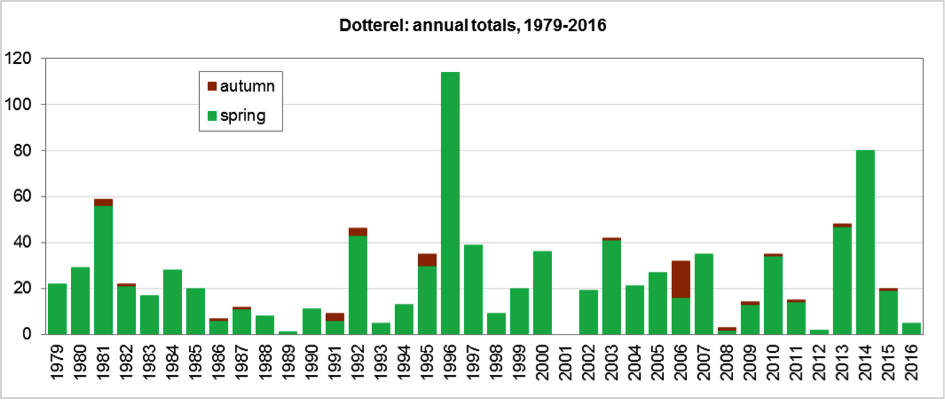
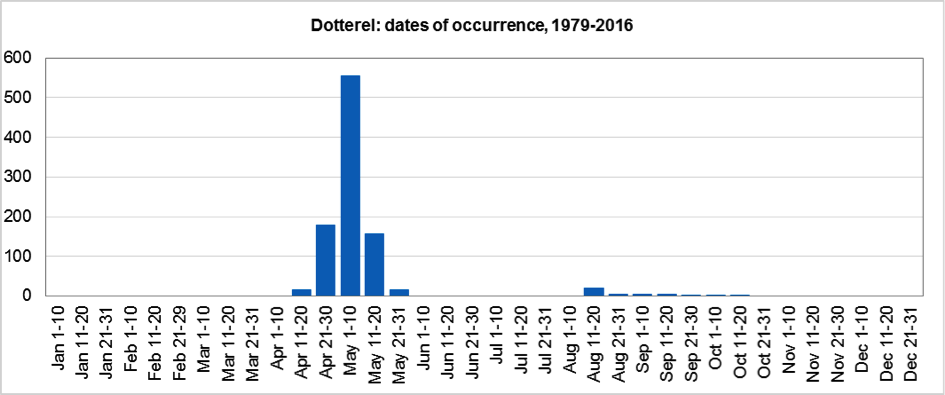
More recently, looking at the five years to 2018, the wide range in birds counted is apparent. In 2014 there were 80 birds, the best year since a total of 109 in 1996. In 2018 there were just 2. The total over the five years was 117 birds, an average of 21. Of these birds 113 were in spring between April-May, three were autumn juveniles and an adult bird was photographed at Frampton Marsh in March 2017. The rarity of this event is such that at that time there were no other winter records for Dotterel on Birdtrack from December-March for the UK. It is also noticeable that of the 117 birds, 109 of them were seen on the coast from Cleethorpes to Huttoft, Frampton Marsh had three, Gibraltar Point two and Moulton Seas End had one. A total of 115 on the coast leaving two (barely a trip!) inland at Worlaby Top in May 2017. This was historically a regular stop off but has not delivered in recent years.
Reference
Cordeaux, J. (1872) Birds of the Humber District. John Van Voorst, London.
(Account updated 2017 with reference to the new Birds of Lincolnshire (2021), included September 2022)


